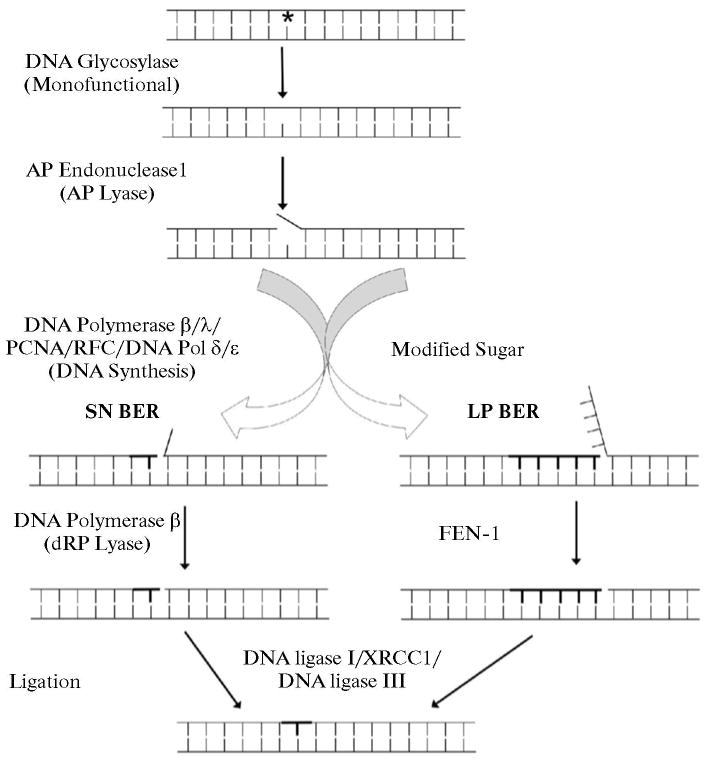Scheme 1.

Working model illustrating the SN and LP BER sub-pathways for the repair of base damaged-DNA. First, a damaged-specific DNA glycosylase recognized and removed the damaged base from DNA. Then, the abasic DNA strand is incised by the endonucleolytic cleavage activity of APE1. After this step, the BER pathway can switch to either SN BER or LP BER, depending on the status (normal vs. oxidized/reduced) of the sugar group. Several DNA polymerases are involved in each sub-pathway. The 5′-dRP group in the SN BER sub-pathway is removed primarily by polymerase β, whereas the displaced DNA strand in the LP BER sub-pathway is cleaved by the flap endonuclease, FEN1. Finally, the nicked DNA is sealed by the DNA ligase I or by the XRCC1/DNA ligase III complex. Both sub-pathways operate in parallel, yet SN BER is considered to be 2- to 3-fold more active. Newly synthesized nucleotides are shown by bold lines.
